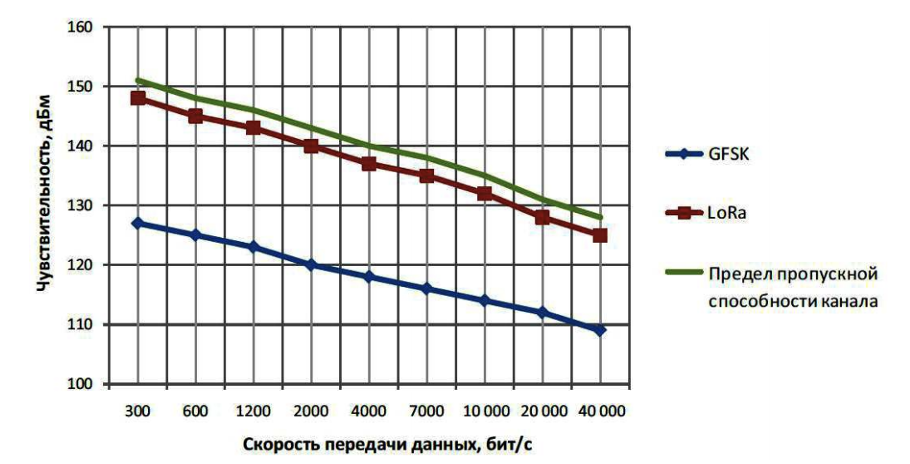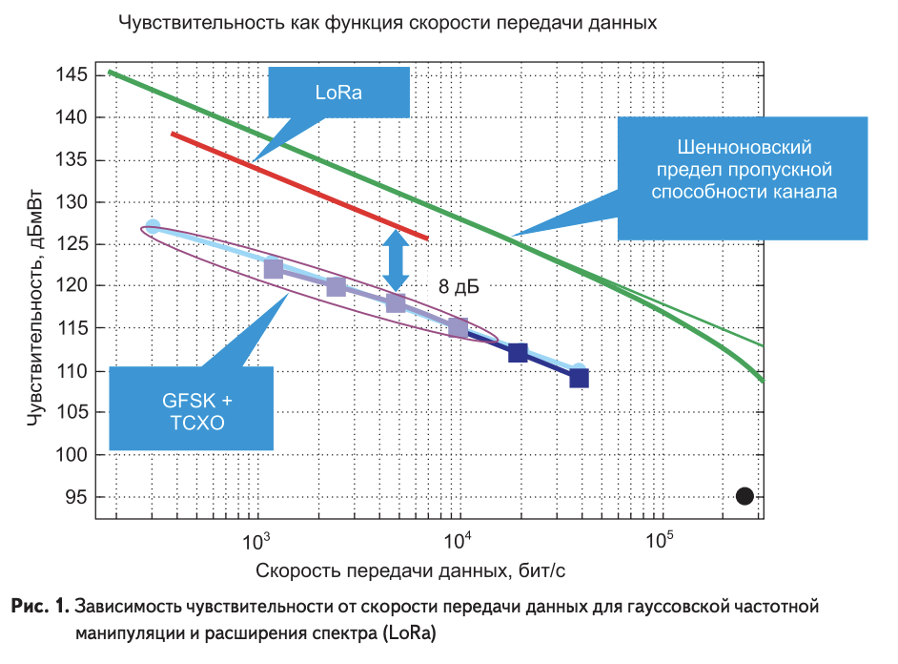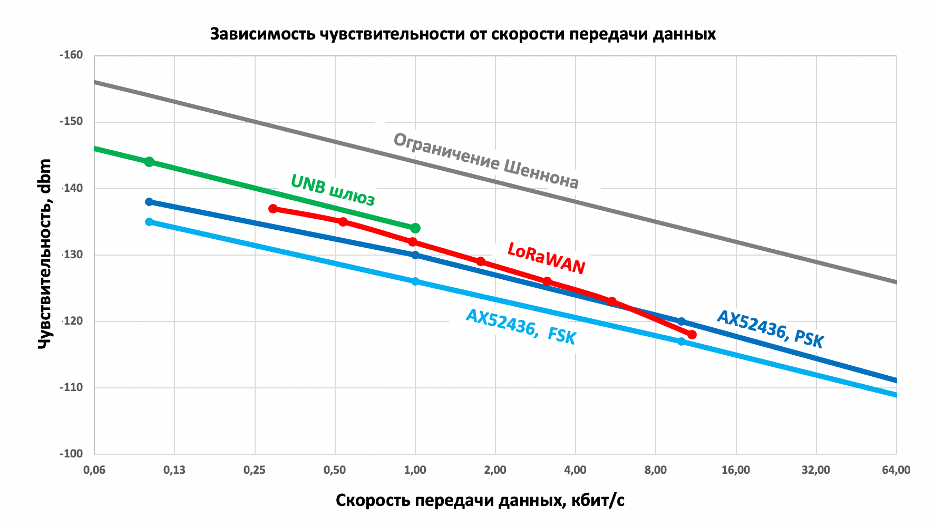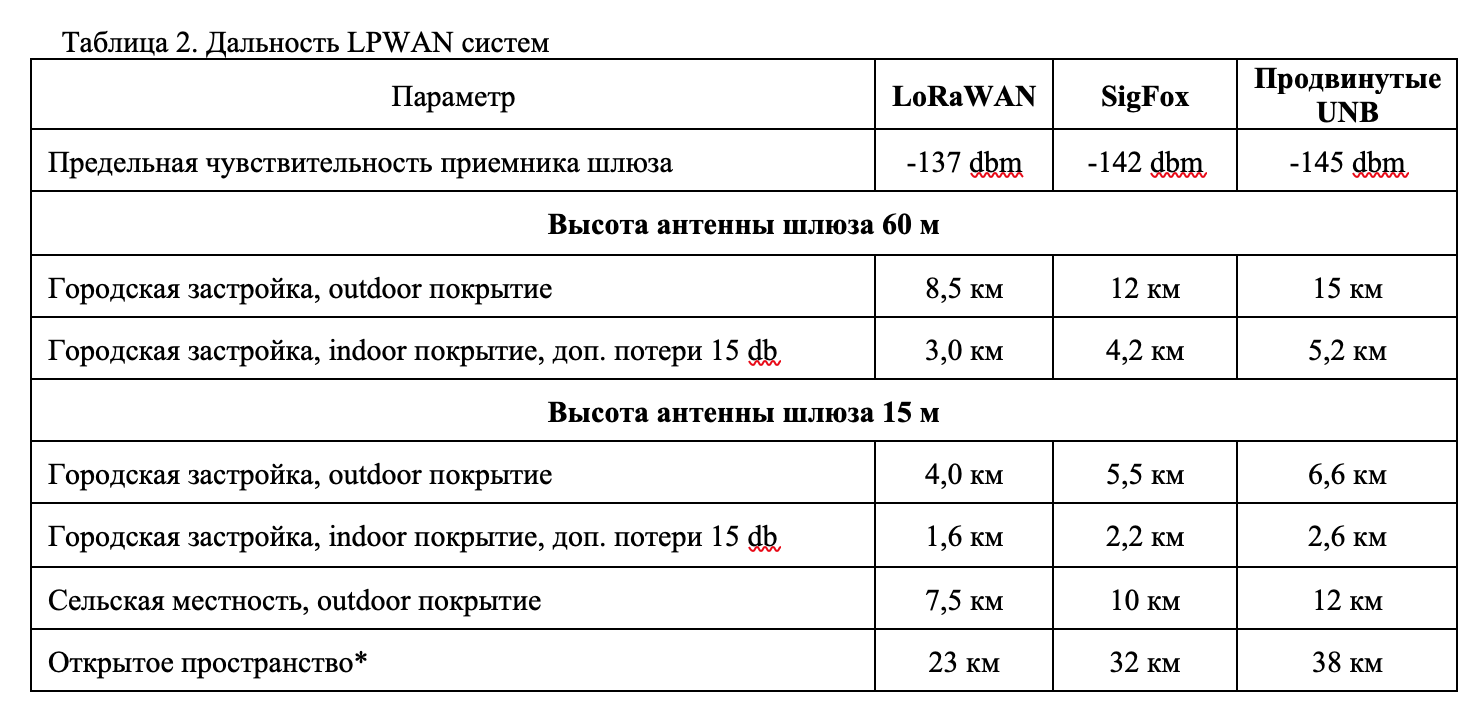Hello to all dear readers of Habr!
To further discuss energy efficiency, we will first have to understand the concept of operating range for unlicensed LPWAN systems.
LPWAN translates as "low-consuming network of a large coverage area", which means that energy consumption, and therefore energy efficiency, is considered only in conjunction with the range of the devices. The range of LPWAN operation is necessary to reduce the cost of the network infrastructure so that one receiving gateway can serve as many devices as possible and does not greatly increase the overhead per sensor.
For example, if we estimate the range of LoRaWAN in a city to be about 5 km, and Bluetooth is 35 meters, then Bluetooth's coverage area will be 20 thousand times less. At the same time, the energy of the LoRaWAN message is approximately the same times more than Bluetooth - this means that the energy efficiency reduced to the coverage area of LoRaWAN and Bluetooth have approximately the same values.
This result is fully consistent with the physical laws of the dissemination of information over a radio channel. Shannon's well-known limitation on the speed of information transmission over the air can be interpreted in the following formulation:
The area of the receiver's coverage area, all other things being equal, is inversely proportional to the information transmission rate and practically does not depend on the type of modulation used.
Bluetooth works quickly, but for a short distance; to provide communication in the area of operation of one LoRaWAN gateway, you will have to install a huge number of Bluetooth gateways, approximately equal to the ratio of coverage areas - 20,000.
So what is the range of common LPWAN systems? If you google, you can find very contradictory information, on the one hand:
"766 km is a new range record for LoRaWAN!"
« : 30-50 (3-10 )»
« 10 , 50 »
:
« – 10 »
« – 3.8 »
« 500 »
. , LPWAN . , .
LPWAN
LoRa.


, . LoRaWAN 868 . AX5243 ON Semiconductor. 1 2.


2 1. , , : , , . , .
LoRa , , , . .
, , , LPWAN . :

. , , .
868 . LPWAN . 14 dbm. 6 dbi, 3 db, 1 . -137 dbm LoRaWAN, -142 dbm SigFox -145 dbm «» UNB , , GoodWAN ( -145 dbm ). indoor 15 db ( , ).

, , , , 1-20 ( 2 20 , ). : , .
, . , 60 , 15 . , ! , , , LPWAN . , , , 10 outdoor .
LPWAN , , , .

, LPWAN .
LPWAN 433 . 06 2021 400 800 . 433- . .
433. 12,5 dbm, 3 db ( ), indoor , , 3 db.

LPWAN , .
indoor . 2 5.

? .
- . , , . , , .
LPWAN , , , . LPWAN , , 3.
LPWAN , . , .
, .
UNB 2-3 LoRaWAN
Indoor outdoor – , indoor 2-3 . LPWAN .
The transition to a lower frequency range from 868 to 433 MHz is associated with the need to use antennas with large dimensions on end devices, but it allows to increase the coverage area by about 2.4 times for indoor devices on the first and semi-basement floors of buildings.